Research Area F - Publications 2010
23-Dec-2010
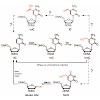
5–Hydroxymethylcytosine (hmC) was recently detected as the sixth base in mammalian tissue at so far controversial levels. The function of the modified base is currently unknown, but it is certain that the base is generated from 5-methylcytosine (mC). This fuels the hypothesis that it represents an intermediate of an active demethylation process, which could ...
07-Dec-2010
Science Signaling, online article
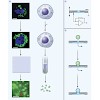
Since its launch in the early 1980s, the patch clamp method has been extensively used to study ion channels in the plasma membrane, but its application to the study of intracellular ion channels has been limited. Unlike the plasma membrane, intracellular membranes are usually not stable enough to withstand mechanical manipulation by glass electrodes during seal ...
05-Dec-2010
Molecular Therapy, 2010, doi:10.1038/mt.2010.149, published on 05.12.2010
Molecular Therapy, online article
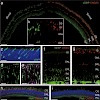
Congenital absence of cone photoreceptor function is associated with strongly impaired daylight vision and loss of color discrimination in human achromatopsia. Here, we introduce viral gene replacement therapy as a potential treatment for this disease in the CNGA3(-/-) mouse model. We show that such therapy can restore cone-specific visual processing in the ...
20-Oct-2010
The EMBO Journal, 2010, 1-19, doi:10.1038/emboj.2010.223 published on 20.10.2010
The Embo Journal, online article
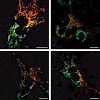
Aggregation of alpha-synuclein (alphaS) is involved in the pathogenesis of Parkinson’s disease (PD) and a variety of related neurodegenerative disorders. The physiological function of alphaS is largely unknown. We demonstrate with in vitro vesicle fusion experiments that alphaS has an inhibitory function on membrane fusion. Upon increased expression in cultured ...
24-Aug-2010
Genes, Brain and Behavior, online article
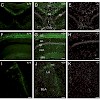
The role of the cyclic nucleotide-gated (CNG) channel CNGA3 is well established in cone photoreceptors and guanylyl cyclase-D-expressing olfactory neurons. To assess a potential function of CNGA3 in the mouse amygdala and hippocampus, we examined synaptic plasticity and performed a comparative analysis of spatial learning, fear conditioning and step-down ...
20-Aug-2010
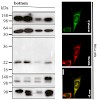
Nicastrin and its relative Nicalin (Nicastrin-like protein) are both members of larger protein complexes, namely gamma-secretase and the Nicalin-NOMO (Nodal modulator) complex. The gamma- secretase complex, which contains Presenilin, APH-1 and PEN-2 in addition to Nicastrin, catalyzes the proteolytic cleavage of the transmembrane domain of various proteins ...
19-Jul-2010
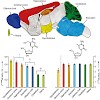
LC-MS has allowed the amount of the post-replicatively formed DNA base 5-hydroxymethylcytosine (see picture; left) to be quantified in brain tissue. The nucleoside is most abundant in areas that are associated with higher cognitive functions, and its content in mouse hippocampi seems to increase with age. The new method enables hydroxymethylcytosine to be ...
15-Jul-2010
Current Biology, online article

Olfactory signals influence social interactions in a variety of species. In mammals, pheromones and other social cues can promote mating or aggression behaviors; can communicate information about social hierarchies, genetic identity and health status; and can contribute to associative learning [1,2,3,4,5]. However, the molecular, cellular, and neural mechanisms ...
06-Jul-2010
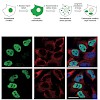
Mutations in fused in sarcoma (FUS) are a cause of familial amyotrophic lateral sclerosis (fALS). Patients carrying point mutations in the C-terminus of FUS show neuronal cytoplasmic FUS-positive inclusions, whereas in healthy controls, FUS is predominantly nuclear. Cytoplasmic FUS inclusions have also been identified in a subset of frontotemporal lobar ...
06-Jul-2010

Mutations in fused in sarcoma (FUS) are a cause of familial amyotrophic lateral sclerosis (fALS). Patients carrying point mutations in the C-terminus of FUS show neuronal cytoplasmic FUS-positive inclusions, whereas in healthy controls, FUS is predominantly nuclear. Cytoplasmic FUS inclusions have also been identified in a subset of frontotemporal lobar ...
06-Jul-2010
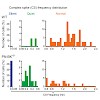
The large-conductance voltage- and calcium-activated potassium (BK) channels are ubiquitously expressed in the brain and play an important role in the regulation of neuronal excitation. Previous work has shown that the total deletion of these channels causes an impaired motor behavior, consistent with a cerebellar dysfunction. Cellular analyses showed that a ...
30-Jun-2010
The Journal of Neuroscience, 2010, 30 (26), 8973-83, DOI:10.1523/JNEUROSCI.1199-10.2010 published on 30.06.2010
The Journal of Neuroscience, online article
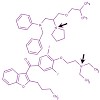
The two proteases beta-secretase and gamma-secretase generate the amyloid beta peptide and are drug targets for Alzheimer’s disease. Here we tested the possibility of targeting the cellular environment of beta-secretase cleavage instead of the beta-secretase enzyme itself. beta-Secretase has an acidic pH optimum and cleaves the amyloid precursor protein in the ...
24-Jun-2010
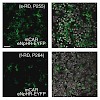
Retinitis pigmentosa refers to a diverse group of hereditary diseases that lead to incurable blindness, affecting two million people worldwide. As a common pathology, rod photoreceptors die early, whereas light-insensitive, morphologically altered cone photoreceptors persist longer. It is unknown if these cones are accessible for therapeutic intervention. Here, ...
09-Jun-2010
The Journal of Neuroscience, online article
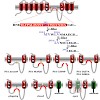
Presenilin (PS1 or PS2) is the catalytic component of the gamma-secretase complex, which mediates the final proteolytic processing step leading to the Alzheimer's disease (AD)-characterizing amyloid β-peptide. PS is cleaved during complex assembly into its characteristic N- and C-terminal fragments. Both fragments are integral components of physiologically active ...
02-Jun-2010
The Journal of Neuroscience, online article
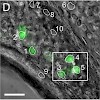
The Grueneberg ganglion is a newly appreciated nasal subsystem with neural connections to the olfactory forebrain, but its functional role has not been well defined. Here, we assess whether Grueneberg ganglion neurons (GGNs) function as thermosensors. By investigating the effect of acute temperature changes on the cytosolic Ca2+ concentration of genetically ...
14-May-2010
Cell. Mol. Life Sci., online article
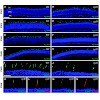
Cone dystrophies are genetic diseases characterized by loss of cone photoreceptor function and severe impairment of daylight vision. Loss of function is accompanied by a progressive degeneration of cones limiting potential therapeutic interventions. In this study we combined microarray-based gene-expression analysis with electroretinography and ...
03-May-2010
Press release of the University of Zurich

CIPSM's Christian Haass received an honorary doctorate from the University of Zurich for his contributions to the characterisation of the intramembrane proteolysis and its importance in neurodegeneration. Congratulation Christian, well done!
29-Apr-2010
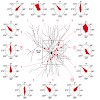
In sensory cortex regions, neurons are tuned to specific stimulus features. For example, in the visual cortex, many neurons fire predominantly in response to moving objects of a preferred orientation. However, the characteristics of the synaptic input that cortical neurons receive to generate their output firing pattern remain unclear. Here we report a novel ...
08-Apr-2010
Neurobiology of Disease, online article
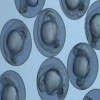
Methylene blue is an FDA approved compound with a variety of pharmacologic activities. It inhibits aggregation of several amyloidogenic proteins known to be deposited in neurodegenerative diseases. Recently, it has been proposed that methylene blue shows significant beneficial effects in a phase 2 clinical trial by slowing cognitive decline in Alzheimer's disease ...
26-Mar-2010
The Journal of Biological Chemistry, online article

Proteolytic processing of the amyloid precursor protein (APP) by α-secretase prevents formation of the amyloid β-peptide (Aβ), which is the main constituent of amyloid plaques in brains of Alzheimer′s disease (AD) patients. α-Secretase activity is decreased in AD and overexpression of the α-secretase ADAM10 (a disintegrin and metalloprotease) in an AD animal ...
26-Mar-2010
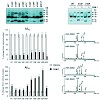
Pathogenic generation of the 42 amino acid variant of the amyloid beta-peptide (Abeta42) by beta- and gamma-secretase cleavage of the beta-amyloid precursor protein (APP) is believed to be causative for Alzheimer 's disease (AD). Lowering of Abeta42 production by gamma-secretase modulators (GSMs) is a hopeful approach towards AD treatment. The mechanism of GSM ...
18-Feb-2010
Neurodegenerative Diseases online article
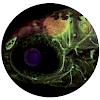
Our ageing society is confronted with a dramatic increase in patients suffering from tauopathies such as Alzheimer’s disease, frontotemporal dementia and others. Typical neuropathological lesions including tangles composed of hyperphosphorylated tau protein as well as severe neuronal cell death characterize these disorders. No mechanism-based cures are available ...
18-Feb-2010
Cell. Mol. Life Sci., online article
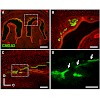
Localized to the vestibule of the nasal cavity, neurons of the Grueneberg ganglion (GG) respond to cool ambient temperatures. The molecular mechanisms underlying this thermal response are still elusive. Recently, it has been suggested that cool temperatures may activate a cyclic guanosine monophosphate (cGMP) pathway in the GG, which would be reminiscent of ...
Rapid time course of action potentials in spines and remote dendrites of mouse visual cortex neurons
15-Feb-2010
The Journal of Physiology, online article
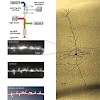
Axonally initiated action potentials back-propagate into spiny dendrites of central mammalian neurons and thereby regulate plasticity at excitatory synapses on individual spines as well as linear and supralinear integration of synaptic inputs along dendritic branches. Thus, the electrical behavior of individual dendritic spines and terminal dendritic branches is ...
29-Jan-2010
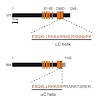
Retinitis pigmentosa (RP) is a severe hereditary eye disorder characterized by progressive degeneration of photoreceptors and subsequent loss of vision. Two of the RP associated mutations were found in the CNGB1 gene that encodes the B subunit of the rod cyclic nucleotide-gated channel (CNGB1a). One of them (c.3444+1G>A) is located at the donor site of exon 32 ...
05-Jan-2010
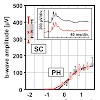
Purpose. To identify individual cone photoreceptors in a transgenic mouse line in vivo based on selective expression of green fluorescent protein (GFP) using cSLO (confocal scanning laser ophthalmoscopy) and to use this approach to monitor cone cell fate in mouse models of retinal degeneration. Methods. Transgenic mice expressing GFP under the control of a ...










